

My Memory Lane is Riverside Drive
Journalist H.L. Mencken, one of the most influential American writers of the first half of the 20th century, once said of his time at The Baltimore Sun newspaper, “As I look back over a misspent life, I find myself more and more convinced that I had more fun doing news reporting than in any other enterprise. It is really the life of kings.” That quote, from 1953, is reprinted on the wall of the lobby in the newspaper’s building.
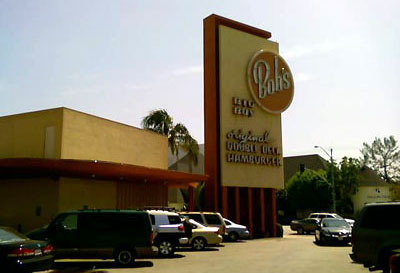 |
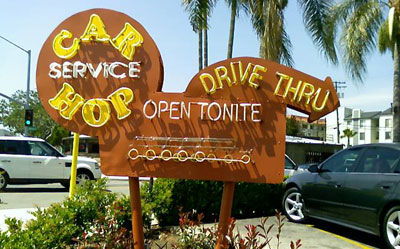 |
I couldn’t agree more with that quote, especially after revisiting a famous lobby of my life on a trip down Memory Lane to the old NHRA headquarters on Riverside Drive in North Hollywood, Calif.
On Monday, I dropped Mom off at the Burbank airport for her flight home to Oregon. Sure, I could've raced back to work, but hey, I’m the boss, right? How about an extended lunch hour? It’s been more than 20 years since NHRA moved to Glendora from the San Fernando Valley, but somehow I dead-reckoned my way back to Riverside Drive.
Of course, no trip to the Burbank area is complete without a stop at the famous Bob’s Big Boy restaurant, just about a mile east of the HQ building on Riverside Drive. It’s a 1960s throwback and the scene, throughout the years, of some serious cruising.
If you rolled in the SFV, chances are that if you weren’t cruising fabled Van Nuys Boulevard, you were hanging at Bob's. Built in 1949, it’s the oldest remaining Bob’s restaurant in America. It incorporates the era’s streamlined moderne design with a prescient look to the coffee shops of the ‘50s. With a towering 70-foot-tall sign, it’s a beacon to nostalgia buffs everywhere. Bob Hope, a resident of adjacent Toluca Lake, ate there. So did the Beatles. It fell into disrepair in the 1980s but was refurbished to its glory in 1993 and proclaimed a California Point of Historical Interest. In a bow to its sock-hop history, car service was reinstituted Saturday and Sunday nights, and classic-car cruises on Friday nights are hosted by the Burbank Road Kings -- yes, the same car club to which drag racing stars Don Prudhomme and Tommy Ivo belonged in the '60s.
One Big Boy Combo later, I pulled up outside 10639 Riverside Dr. For me, it was kind of like going back to the place where I was born because, as I look at it fondly now, there is only life before NHRA and life since, the latter taking up well more than half of my 47 years. I honestly can’t remember a time when this wasn't me. This job defines me.
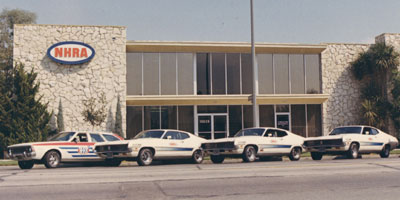 |
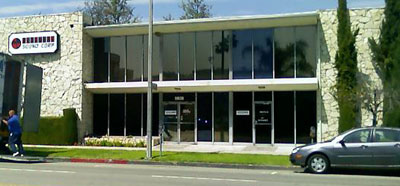 |
The building, now leased to a sound-equipment wholesaler, looked the same from the outside, save for the absence of the proud NHRA logo. Wally Parks’ office had been in the top left. When you walked in the door, behind the receptionist’s desk, was parked the famous Dragmaster Dart that currently resides at The Wally Parks NHRA Motorsports Museum.
The building, conveniently located near the intersection of the Golden State (I-5) and Ventura (134) freeways, officially became the home of NHRA Sept. 1, 1970, and the spacious two-story building was a big step up from the First Street offices in Los Angeles that had been NHRA’s home since 1962. It was here that I first met larger-than-life characters like Parks, who hired me and whose faith in that decision I vowed never to betray; Bill “Farmer” Dismuke, who showed me my first computer; Steve “Hook” Gibbs, who earned the admiration and friendship of just about every racer in the pits despite being the guy who sometimes ruined their day; Photo Editor Leslie Lovett, who molded my raw photographic skills; and Advertising Director John Mazzarella, salesman and skirt chaser nonpareil.
I sat in a rickety old chair behind a fourthhand desk and an ancient manual typewriter. I traded in a girlfriend and a nice apartment in West L.A. for a dingy apartment in NoHo and $17,500 a year -- $5,000 less than I was making at my previous job. I couldn’t have cared less about the sacrifices. I was about to merge my two great passions: drag racing and writing. I was going to be in the publishing business, with bylines and everything, something I had envisioned since I read my first newspaper at age 12. I was no longer going to be slinging the news into people’s bushes from the handlebars of my bike but writing it. Where do I sign?
I joined the staff May 24, 1982, just in time for the rainout of the SPORTSnationals in Houston that was the top story in the first of more than 1,200 issues of National DRAGSTER I have been part of. It was a great time to be a drag racing writer. Frank Hawley and the Chi-Town Hustler had just won the Gatornationals in the team’s return to glory (the same race where Shirley whipped Garlits in a dramatic Top Fuel final), Lucille Lee had just made history in Atlanta as the second woman to win in Top Fuel, and Don Prudhomme was about to become the first Funny Car driver to eclipse 250 mph. I was the new guy and had to prove myself, not just to my fellow staffers but to the racers. Being a reporter just starting out can be tough. Like relationships in life, you have to work to earn and keep trust. You write what is known, what you saw, and what you know to be true, and little else. Never burn a source. “Off the record” is sacred.
I stood outside the old building for a second, then walked to the 7-Eleven at the corner of Riverside and Cahuenga, a half-block walk I made many times in the four-plus years before we moved to Glendora in early 1987. It was just a long enough walk to clear your head and recharge your creative batteries. The Toluca Lake Florist, which has been planted on that corner since 1946, was still there, as was the Vendome liquor store across the street. It was like walking into a time warp, and the memories came flooding back.
Former ND Art Director and fellow Diet Coke addict Bill Crites and I used to walk to the store in the morning for our caffeine fix and a few rounds of Burgertime, an old arcade game. We were there, I well remember, the morning of Jan. 28, 1986, and heard the clerk gasp. The Space Shuttle Challenger had just exploded. We hurried back to the office and watched the horror replayed on Leslie’s portable black and white TV in the Photo Department darkroom.
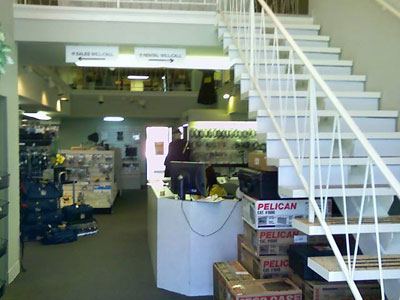 |
I bought a Diet Coke for old time’s sake –- the video-game corner now is filled with an ATM and a rack of calling cards –- and walked back to the old building and got up the nerve to walk inside. The old place sure has changed. Where the Dragmaster stood is now an open sales area with all manner of audio equipment.
The receptionist eyed me warily as I whipped out my cell phone to snap some pics for the few North Hollywood veterans -– Teresa Long, John Jodauga, Don Kraushar, George Phillips, Pat Simpson, and Jim Trace -– who still work at NHRA. I wanted to climb the steel and stone steps to the second floor and walk back to my old office, but the receptionist was eyeballing me like I was an axe murderer, so I didn’t even ask. I took a final look around, then it was time to go.
I walked outside and shot a few more pics, then walked across the street to where I had parked the Pontiac, in a strip mall that had once been the site of a miniature golf course where the staff had hosted mini tournaments to which they invited big-time racers. And they showed up. It was a different time. Not necessarily always better, but memorable. I powered the Pontiac back toward Glendora, casting a final fond glance in the rearview mirror.



















































